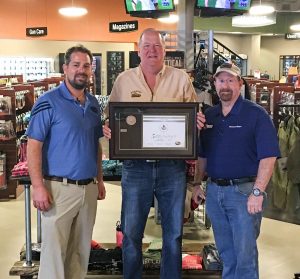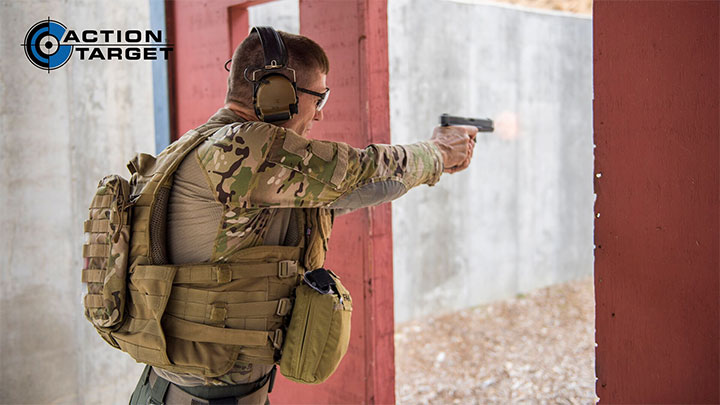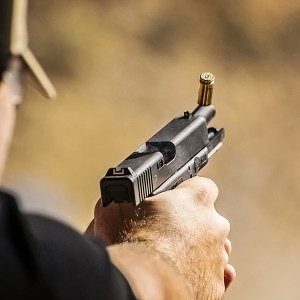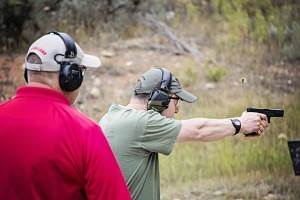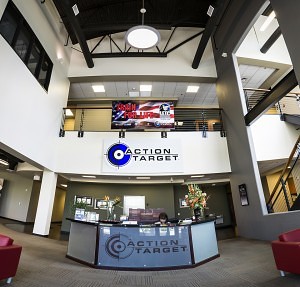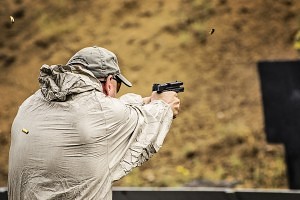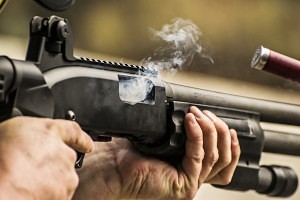|
Category: AT Featured Article
MATCH™ (MODULAR ARMORED TACTICAL COMBAT HOUSE)
Action Target’s Shoot House featuring Auto Target Hit Sense Technology.
Action Target’s MATCH™ is a 360°, live-fire, ballistically safe, shoot house designed for teaching and learning close quarter skills, like room clearing and hallway navigation, with realism and safety.
AutoTargets enhances training and the shooting experience. Each lift unit can be placed as a stand-alone target, or daisy-chained from a single air supply. Because AutoTargets is portable, it can be placed in any configuration or incorporated into any terrain. It is effective in shoot houses, Hogan’s alleys, and other close quarters combat environments, as well as open- eld, long distance training courses. A pressure sensitive target version is also available for use with non-lethal ammunition projectiles.
Action Target Announces Dates for 2016 Law Enforcement Training Camp (LETC)
PROVO, Utah – Action Target today announced official dates for the 2016 Law Enforcement Training Camp (LETC), an annual event featuring advanced firearms training presented by many of the best instructors in the industry.
LETC 2016 DATES: SEPTEMBER 12 – 16, 2016
Now in its 24th year, LETC brings together over 140 of the very best firearms and tactics instructors from around the world for five-days of intensive firearms training on Action Target’s state-of-the-art shooting ranges.
"We’re very proud of the LETC program and the opportunity it provides for Action Target to give back to the community. Each year we receive the highest accolades from attendees and supporters. LETC 2016 will bring new courses, better ammo purchasing and shipping opportunities, more vendors, and much more," said Seth Ercanbrack, Marketing Communications Manager at Action Target.
Agencies and trainers interested in attending LETC 2016 are encouraged to subscribe to the Action Target email communications list. Learn more about Action Target’s Law Enforcement Training Camp at https://www.actiontarget.com/LETC.
LETC 2015 Video Highlights
About Action Target
Target Inc. Action Target Inc. is a privately owned business headquartered in Provo, Utah. As a world leader in shooting range technology with more than 4,000 products and 40 patents for the systems it designs and manufactures, Action Target has installed thousands of shooting ranges across the United States and in 40 other countries around the world. Action Target also designs systems and conducts firearms training for law enforcement and various military divisions. For more information on Action Target, visit www.ActionTarget.com. To learn more about Action Target products or to purchase items online, visit www.LETargets.com.
Action Target Builds TriCounty Tactical Mobile Shooting Range
The lead trainer for TriCounty Tactical, Kurt Newman, was aware of the training needs across many police departments and law enforcement agencies, but also realized the tight budget constraints of these same agencies. Knowing what they wanted to accomplish, TriCounty Tactical requested a mobile shooting range with ballistic containment and advanced training capabilities beyond what had developed as the standard for mobile shooting ranges.
TriCounty Tactical approached Action Target with the idea to create this mobile shooting range. The goal of this 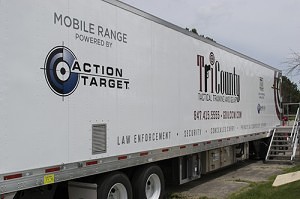
Action Target designed and built an advanced shooting range contained within a 53 foot semi-trailer completely armored in AR500 steel. The range includes advanced target retrievers, a custom air filtration system and a custom rubber berm trap for bullet containment and recycling. The trailer also utilizes an onboard diesel generator for untethered powering allowing it to be used virtually anywhere.
The safety of the shooter and anyone outside the range was paramount in the construction process. A great amount of 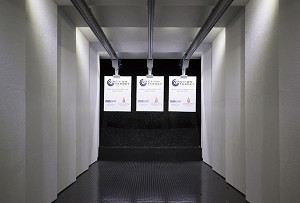
The mobile range has a “no blue sky” design, meaning there is continuous overhead ballistic containment from the firing line to the bullet trap for tactical use. This was accomplished by armoring all four sides of the trailer with AR500 armored steel.
A sound abatement material called PEPP was used to cover the side walls, overhead baffles and the area behind the shooter to reduce the noise generated from shooting and reduce reverberation in the range. The PEPP also helps contain bullet splatter from errant rounds.
Three shooters can train from the standing position at one of three clear shooting stalls or the table can be collapsed at 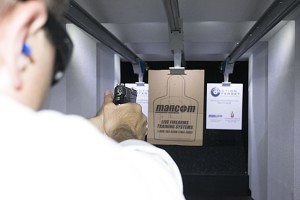
Bullets are safely captured in a custom rubber berm trap that is capable of stopping all handgun rounds as well as rifle rounds up to .50-cal BMG.
To meet the unique training demands of law enforcement, the Mancom Touch Plus was installed as the target retrieval system. The Touch Plus offers 360 degree turning as well as blue, red and white LED lights on the carrier and programmable scenarios for different qualification courses.
The three target retrievers can be controlled by the individual shooter from each shooting stall or by a range master from a master control system.
Carey’s Small Arms Range Ventilation designed and installed the HVAC system. The ventilation system keeps 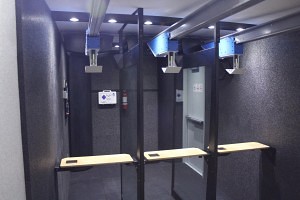
All of these safety and training features came together to provide a new training tool available to any agency that has a training need but lacks funding for their own shooting range. It also serves the civilian market by providing a shooting range that can be delivered on demand.
TriCounty Tactical plans to make the mobile range available for not only law enforcement, but for corporate events, 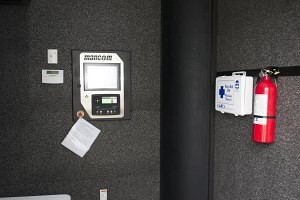
THINKING ABOUT BUILDING A SHOOTING RANGE?
Building a shooting range can be an overwhelming process. Your time and resources deserve a partner who will listen to your ideas and turn your dreams and plans into a successful, thriving business. If you are considering building a range, talk to the Action Target Range Consultant in your region, and he will be happy to help you find the right equipment to fit your needs and budget. You can also use our Request a Quote form to get started on your range project today.
Please note, the tips included in this message have been found to be helpful for many clients throughout the years but may not apply in all situations. Please use judgment in determining which tips will be helpful in your particular situation.
The 411 on Shooting Range Ventilation
Ventilation is one of the most important aspects of an indoor shooting range. However, many misconceptions and contradictory information exist on the topic. As a range owner, it can be difficult to know what information is accurate and what the most important aspects of range ventilation are. Here are a couple common misconceptions debunked:
Misconception #1: The type of rounds shot will change the ventilation design.
Truth: It does not matter what type of rounds are shot, what type of ammunition is used, or how much shooting occurs in a small arms range. There is a standard ventilation design that works great for all ranges regardless of what ammunition is shot.
Misconception #2: Air flow speed in a range can be anywhere between 50 feet per minute and 75 feet per minute at the firing line.
Truth: The range should be designed for 75 feet per minute at the firing line or lines. This should result in an air flow that is not below 50 feet per minute at any individual point.
Misconception #3: Air flow tests should be done with people or mannequins in shooting positions.
Truth: All air flow testing should be done on an empty range. The testing and commissioning procedure on an empty range has proven to meet Occupational Safety and Health Administration (OSHA) exposure levels.
Why Range Ventilation is Important
Along with understanding the misconceptions that exist about range ventilation, it is important to understand the various purposes behind 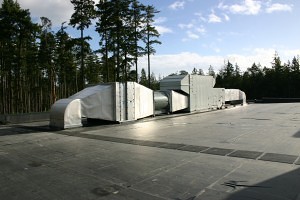
The first and primary purpose of ventilation is to remove contaminants created during the firing of a weapon from the respiratory zones of those occupying the range. Exploding primers containing lead styphnate and friction from the lead slug against the gun barrel create airborne lead. Carbon monoxide and other contaminants are also created during the firing of a weapon. The ventilation system removes all of these harmful particles.
The second and equally important reason for a properly designed and installed ventilation system is to keep the range at a negative pressure to the surrounding building space. Contaminants need to be contained in the range space. This will prevent the ingestion of these harmful particles, and also keep the non-range spaces and surfaces of the building free of contamination. This in turn will ensure the health and safety of all customers and employees.
The final purpose of the ventilation system is to remove the smoke from the range so visibility is high and the targets can be seen.
Ventilation Systems and How They Work
Many range owners are aware of the purposes of a ventilation system but may have questions when it comes to the system types and designs.
The suggested air flow for a small arms range is an average of 75 feet per minute at the firing line. This air flow must be even from floor to ceiling (known as laminar flow) and have minimal turbulence. There have been two general approaches to the distribution of air that have been used within the industry.
The first is a plenum wall. Although this approach can work and some have successfully tested to provide laminar flow, the plenum wall has also been prone to problems. The main issue is when the access door to the range and the window from the range safety office have been installed they tend to create turbulent areas. This can disrupt the laminar flow, which can prevent the contaminants from being properly contained. There have also been problems where the range officer standing in one position has caused a lane to fail the exposure test.
The second method that has proven successful is the radial diffuser. This method disperses air into the range in a 180 degree radial pattern. These diffusers are custom built and tested to provide proper air flow at the firing line. It is critical to only use proven products that have been tested to achieve the laminar or even air flow at the firing line. This will ensure the safety of range employees and customers and also keep the range compliant with health and safety regulations.
When deciding on the design of the ventilation system, negative air pressure is also important. Providing negative pressure in the range is accomplished by designing more exhaust than supply air. Creating laminar air flow at the firing line will protect a shooter’s respiratory zone, but it will not keep contaminants created in the range from entering other areas of the building. The industry standard for this design is 10% greater exhaust than supply. The tighter the range area of the building is constructed, the less differential is necessary to maintain the proper pressure differential. Some ranges have been designed with the 10% differential, but the exhaust is filtered and there was no method of modulation for the exhaust based on filter loading. This caused the range to go positive within a week of a filter change. It is very important to oversize the exhaust fan and use a variable frequency drive or an inlet vein vortex damper to regulate the fan. This will control the amount of exhaust that is filtered and keep the air at a negative pressure differential.
The most critical component to keeping the range negative is a control system that can start up, stop, and maintain a negative pressure in the range at all times. The control system must also monitor the range conditions as well as sound an alarm and shut down if unsafe conditions are present.
The Economics of Range Ventilation
Price may be another factor in considering a ventilation system as they can be expensive. A range owner might think about just using a local 
If the system is too difficult for the range staff to use, chances are the staff won’t use it, or it won’t be used properly. The top names in the industry have made usability a priority to ensure each ventilation system is easy for the end-user to understand and operate. For example, Action Target’s ventilation features a single control switch that activates the entire ventilation system and indicator lights that turn on when the system is ready for use. A convenient digital interface screen displays the status of the ventilation system at all times and displays any errors, alarms, or unsafe conditions that might arise. If something happens, Action Target can dial in to the ventilation system via a built-in modem to diagnose and make adjustments remotely.
Proper shooting range ventilation is essential. There are hazards and pitfalls that can be avoided only by companies with sufficient expertise and experience, so make sure to choose a team that can do the job right. The effects of poor ventilation in a shooting range are a serious matter, and potentially hazardous to the health of both range employees and customers. Lead poisoning in adults and children can cause digestive problems, high blood pressure, hearing problems, memory and concentration problems, and a host of other health issues. These hazards can be avoided if the range is ventilated properly. Without fail, an indoor range ventilation system must provide and maintain clean air for everyone in it. With a properly installed and functioning ventilation system, range owners can operate their range worry-free, assured the system is keeping the range, employees, and customers contaminant free and healthy.
Rely on the Experts for Help
There are hundreds of things to take into consideration when building a shooting range, but your top priority should always be safety. Before anything else, make sure your range is going to be safe for your customers, your employees, and the environment. If you are considering building a range, talk to the Action Target representative in your region and he will be happy to help you find the right equipment to fit your needs and budget. You can also use our Request a Quote form to get started on your range project today.
Please note, the tips included in this message have been found to be helpful for many clients throughout the years but may not apply in all situations. Please use judgment in determining which tips will be helpful in your particular situation.
Illinois Concealed Carry Instructor Fraud: Are Citizens Being Trained Correctly to Carry Concealed Firearms?
By John Krupa III
As citizens rush to obtain their Illinois Concealed Carry License (CCL) many unwarily fall victim to instructors failing to properly administer the state mandated training requirements.
The Illinois State Rifle Association (ISRA) and the Illinois State Police have received numerous complaints that ISP “approved instructors” are taking shortcuts, skipping required training elements or simply signing off on CCL certifications without presenting any course material at all!
As one of the Senior State of Illinois Certified Master Firearms Instructors I feel obligated to take point addressing these issues to not only alert citizens of CCL instructor fraud, but also contribute to the education of ISP approved CCL firearms instructors state-wide.
Getting your Illinois Concealed Carry License
When people ask me “What’s the best way to find a reliable CCL instructor?” here’s the advice I give them: Take your time, do your research and don’t rush at the first open slot in a class. It’s better to find an instructor you are confident in and wait your turn to train with him / her.
When you find an instructor on the Internet that interests you, make sure that person is listed as an approved instructor on the Illinois State Police website. If they are not listed on the approved instructor list, but are offering Illinois CCL classes, then it’s a scam!
What is the instructor’s background?
Do the instructors have their credentials available for you to review on their website? If they don’t have their credentials posted on their website, ask them to provide you with a copy of their Professional Vita. If they decline to show you their Professional Vita, I’d seriously question considering them as the person you want to complete your CCL training with.
Keep in mind that the person you select to certify you for your CCL is the person that is required to retain your training records and will be one of the witnesses that will be subpoenaed to court to testify on your behalf. The selection process to secure your personal defense experts starts BEFORE you use deadly force, and begins with the person you select to certify you for your CCL!
When reviewing an instructor’s credentials, you also want to look at the instructor’s experience. Are you selecting a person that specializes in personal defense training? Can they demonstrate the length of their experience on this subject? Will that person be able to provide expert testimony in court on your behalf based on their established experience? You may want to consider avoiding inexperienced instructors with no background so you don’t end up being their crash test dummies.
Get familiar with the Illinois CCL law
Go to the ISP website and download the Illinois CCL Law PDF. It’s a lengthy document (over 160 pages) so I’m recommending students to copy it to a thumb drive and take it to their local print shop and have them print it out. Have the print shop copy it double sided on 3-hole punched paper so you can keep it in a binder. This will allow you to highlight the important issues you need to remember and make notes where needed.
Read the law and become familiar with it prior to attending your CCL certification course. Write down questions on topics you don’t understand and have them ready to ask the instructors as they cover those topics. You are not going to become intimate with this law over a 16-hour course. Ultimately, it will be up to you to know and understand the law.
Review the list of topics the Illinois CCL law requires you to learn
Go to the ISP website and download the Concealed Carry License Firearms Curriculum Approval PDF. This form outlines the curriculum elements that each instructor is required to present to their students in their classes by State law.
Print this form out and bring it with you to class and check off each element as the instructor presents them to ensure the instructor covers all of the elements you are required to learn.
Should the instructor miss any of the required elements that are listed on the Curriculum Approval form or fails to cover them in detail, make sure you ask questions about those elements until you are satisfied that you understand them.
If an instructor deliberately skips any of the elements they are required to teach or refuses to address your questions about elements they have failed to cover, then you HAVE NOT been properly trained as required by State law.
If this happens, I recommend that you immediately withdraw from the class, request that your tuition be refunded and find an instructor on the ISP website that is going to present the course materials correctly.
If you are the victim of ANY instructor transgressions described in this article, you should be aware that the Illinois State Police has investigators assigned to investigate these violations! Any ISP sustained complaints will result in that instructor’s ISP approval ID number being revoked and their name removed from the approved instructor list.
Tips for ISP Approved CCL Firearms Instructors
First and foremost, congratulations if you made the ISP approved instructors list. While many of you have worked very hard to become certified and registered to teach Illinois CCL courses, it is important to know that the bulk of the instructor transgressions that have been reported to the ISP have been committed by a very small percentage of approved instructors.
With that being said, here are some tips that can help you provide the most professional CCL training courses to your students.
Know the law and protect your students
There is A LOT of responsibility in teaching this program. As an instructor, you have to know the Illinois CCL law beyond a “working knowledge”. Instructors need to be able to understand the law at a level where they should not only be able to teach it, but also be able to explain what they presented as an expert during testimony at depositions and in a court of law.
An instructor must be able to demonstrate knowledge of the Illinois CCL law beyond the familiarization offered to students. If an instructor fails to demonstrate accurate knowledge of the law during testimony, how can the instructor testify (demonstrate) that his / her students were trained correctly?
If a student claims that they did what they were trained to do and it’s proven during depositions and / or court testimony that the instructor did not train the student correctly, the student is at fault for not understanding the law!
In turn, as soon as the student is found liable for punitive damages (or possibly criminally convicted) that student is going to file a vicarious liability lawsuit against the instructor for failure to train (i.e. improper training).
There are many cases that have influenced law enforcement training policy changes along these lines where police officers sued their agency and fellow officers for these very same reasons.
Instructors are responsible for EVERY student they certify! If one of your students is involved in a CCL related use of deadly force incident (good or bad) you can bet that the instructor that certified them is going to be subpoenaed to testify in that case.
Be thorough in your presentation and cover all CCL elements
Shortcuts are not an option, so don’t skip material or leave anything out. Present the Illinois CCL curriculum as required. Your students are relying on you to be the expert on this. Earn your students trust and give them the confidence that you have their back and they can rely on you if their case ends up in court.
So many instructors are bent on presenting their CCL programs at the minimum standards! If you read the ISP curriculum requirements, you will see that the ISP leaves the discretion up to the instructors to exceed those standards.
This means you can increase the number of training hours to include enhanced course elements; more dry-practice drills, more live-fire drills, extended lectures on combat mindset, situational awareness, conflict resolution, etc.
You don’t need to turn this into a 20 or 30 hour course, but to add another 1 or 2 hours onto your program to make sure your students have everything they need is just another way of showing how professional you are at what you do and that you care about your students safety and wellbeing.
Take pride in the program you present and your students will be proud to have trained with you!
Continue to build your instructor credentials
“As instructors, we are committed to serving our students. We serve our students by striving for excellence in training and being the best we can at what we do. We become the best by constantly training hard and seeking perfection in every task we complete. These are the traits that make us unique.”
– John Krupa III, Chicago Police Department, IALEFI Conference 2007
Whether you’re a brand new NRA Basic Pistol Instructor or you’ve been teaching for the last 20 years, you never stop training! The firearms training industry is constantly evolving and requires us to keep up with training trends and continuous maintenance of our skill-set.
Attend as many training courses as you can. Study what other instructors are doing and see how you can apply new training concepts to your Illinois CCL course. The more diverse your training background is the stronger presence you will have as a professional trainer and expert witness.
Join professional instructor associations such as the International Association of Law Enforcement Firearms Instructors (IALEFI) and the International Law Enforcement Educators & Trainers Association (ILEETA). Attend annual training conferences and network with your fellow instructors.
In the end, your instructor skills will only be as good as you allow them to be. Don’t let yourself fall into a comfort zone where you start thinking “I know everything I need to know about shooting and teaching”. So many instructors fall into this pit and many never make it out.
Where is the Illinois CCL program headed?
Ultimately, the Illinois CCL program will only be as good as we want it to be. If we allow incompetent instructors to breed incompetent CCL students the potential exists to generate negative case law that could result in stricter CCL restrictions or rescinding the Illinois CCL law altogether.
We have an obligation and responsibility to work together to protect this right that we have worked so hard to establish in Illinois. Let’s train smart, train safe and carry responsibly.
As always – stay safe.
About John Krupa III
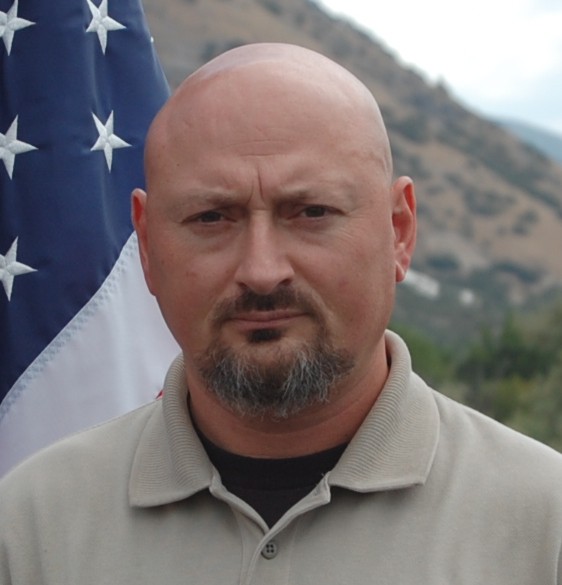
For more information about training courses offered by John Krupa, visit his website at www.TeamSpartan.com
The views and opinions expressed in this article are those of the author and do not necessarily reflect the official position of Action Target as a company.
7 Public Relations Tips for Shooting Ranges
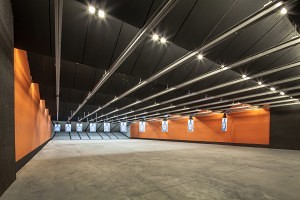
#1: Educate your neighbors.
People fear what they do not understand. The majority of the resistance you will experience in building your range is often the product of a lack of understanding from misinformation. A quick online search will show the majority news stories that talk about shooting ranges center on how they create dangerous environments for children and communities because of the presence of guns or the possibility of bullets escaping the confines of the range. Do not be afraid to attend local civic meetings and community events or even go door to door to educate the public about your project and how it will benefit the community as a whole. It is important to be visual and factual in your presentation. Use pictures and graphs to illustrate your points rather than relying solely upon words. Always exercise caution when speaking to the public and local government officials. Before you attempt to communicate openly about your shooting range project, you should conduct or find research to determine the political atmosphere of your community. Depending on potential resistance, keeping a low profile may be the best course of action rather than attacking public perception head on.
#2: Know what makes your range unique.
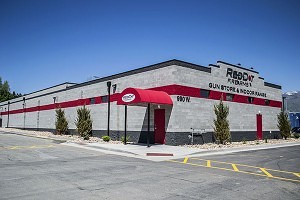
What followed was a media frenzy. Not only did it catch the attention of the local news agencies, the story also found its way into the national limelight with coverage from ABC News, Yahoo News, Fox Business, U.S. News on NBC, The Blaze, and Guns.com. Even Jimmy Kimmel caught wind of it and featured a skit about the range called “Chuck E Norris” on his show. Obviously, not all of the coverage was positive, but it gave Prince a chance to talk about his range on a public stage and draw enormous attention before the range had even opened.
#3: Talk to the media early and often.
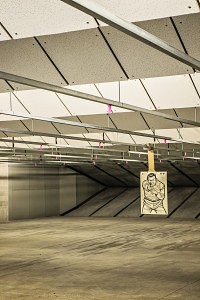
#4: Host a grand opening event.
Holding a grand opening event is one of the best ways to get the attention of your local community and media. Don’t jump the gun, though. It’s generally best to have an unannounced soft opening with your grand opening celebration taking place a few weeks or even a month later. Delaying the grand opening will give you time to make sure everything works properly, shelves are stocked, and employees are trained. Coordinate with one of the main firearm brands you will carry to be on site during the event to do demonstrations or even hold raffles (if charging for raffle tickets, make sure you follow your state’s gambling laws). You can also draw attention by offering discounts or sales on merchandise, range passes, memberships, etc. Invite notable community members like the mayor and the chief of police and include them in an official ceremony like a ribbon cutting (or ribbon shooting). Once plans have been made, get the word out to the media. Research reporters in your area who would possibly be interested and send them an official invitation two weeks in advance that quickly details what will happen, who will attend, and why it is important. Send the invitation early in the week to avoid traditional end-of-the-week deadlines, and keep it as short as possible.
Hire a professional photographer to be at the event. Photography is often one of the most overlooked aspects of opening a range. Too often, a new shooting range opens and the only available photos are dark and grainy and were taken before construction was even complete on whoever’s cell phone happened to be handy. Invest in a good photographer to document your range and provide you with attractive photos that you can use on your website, in social media, and in the news. The better you can portray your range through photos, the more people will want to come.
#5: Be an expert on all things firearms to the media.
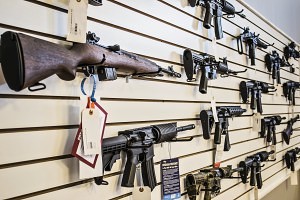
#6: Hold/support regular community events.
Continue to interact with your community regularly. Host various shooting groups (especially women shooting groups) at your range on specific days or nights. Hold IDPA, USPSA, Ruger Rimfire Challenge, or other competitions at your range if possible. Support local organizations like the Boy Scouts of America, law enforcement agencies, and veterans groups. Make sure you plan events well in advance to provide adequate time to advertise and plan them. If you do not give your community enough time to plan to attend or even the opportunity to find out about the events you hold, these will end up damaging you rather than benefiting you.
#7: Maintain Constant Contact.
Never stop building and strengthening your brand. Communicating with your customers, the community, and the gun industry outside of work will help build mutually beneficial relationships. There are too many ways you can do this to list all of them, but here are the ones we feel are most effective when used correctly:
- Social media – Make good use of Facebook, LinkedIn, Twitter, Google+, Pinterest, and other platforms to provide an easy way for your customers and community to communicate with you. These are great places to talk about events, share pictures, and post how-tos. As the social media population continues to grow, it is ever more important to have an active presence.
- Craft a newsletter – You do not have to publish a daily, weekly, or even monthly newsletter. It just needs to be consistent and expected. You and your staff are firearms experts, so share that knowledge as much and as often as you can. Newsletters are a great place to put a calendar of events to let people know what is happening at your range and when.
- Spotlight your employees – You can do this in the newsletter, on social media, through the news, or in your business. If you have an employee that is a trained instructor, excellent with customer service, or anything else that is noteworthy, brag about them.
- Listen to your customers – You have to listen to your customers and make changes based on what you hear. Your ability to adjust to the needs of customers will determine your success. Actively listen to their suggestions by providing a forum. Include a comments and suggestions section on your website, host surveys through social media, and ask every customer who comes through your doors what is most important to them.
No matter where you are at in your range project, it is never too late to take control of your public image. Remember that your reputation, image, and brand are all living things. The moment you stop feeding and putting effort into them is when they will start to work against you.
Help Shape the Changing Face of Shooting Sports
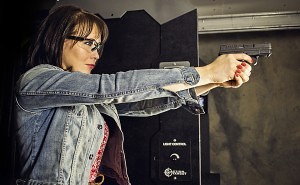
The study compares established shooters (more than five years of experience) with new shooters and shows that this new wave of shooting enthusiasts is often younger, female, and urban. Here’s a breakdown of the numbers:
Younger: 66 percent of new shooters fall into the 18-to-34-year-old category compared to 31 percent in the same age category for established shooters.
Female: 37 percent of new target shooters are female compared to 22 percent of established target shooters.
Urban: 47 percent of new target shooters live in urban/suburban settings versus 34 percent of established target shooters.
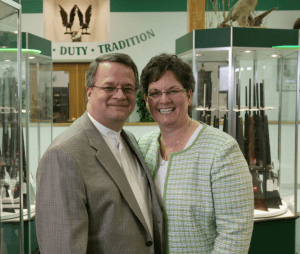
For owners of shooting ranges and gun shops, this means that it is no longer “business as usual.” As customer demographics change, so must the industry.
Innovative shooting ranges and gun shops across the country have taken notice of the trend and are adjusting the way they do business. One such innovator is Miles Hall, owner of H&H Shooting Sports in Oklahoma City.
“Shooting is not a men’s only club anymore,” Hall said. “47 percent of our customer base is women.”
In response to the shift, Hall has made a concerted effort to upgrade his shooting range facilities and provide firearms training that meets the demands of the new generation of shooters.
“There’s a huge audience out there who want to shoot, and you’re going to have to have the right equipment to take care of them,” Hall said. “The shooting sport has changed, and you have to either be changing with it or you’re going to die in the past.”
How You Can Help
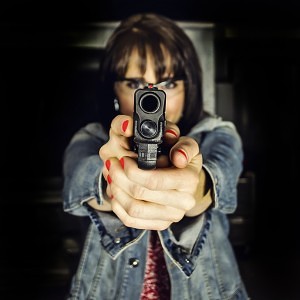
As a company that not only manufactures shooting range equipment but also consults with range owners on every aspect of their businesses, we try to provide the most accurate information to help them succeed. In response to the industry’s shifting demographics, Action Target has created a survey to better understand the preferences of women when it comes to shooting range equipment, technology, and amenities.
Survey participants who qualify will receive a one-time use 20% discount to Action Target’s online store. The discount will be available through the end of the year.
What Makes a Professional Firearms Instructor?
By Dave Staskievicz
Editor’s Note: Action Target has republished this article in its entirety with the permission of the author. Ideas, comments, practices, recommendations, etc. are the author’s own and do not necessarily represent those of Action Target.
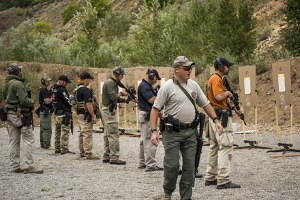
Depending on the type of firearms instructor you are, your answers might be a little different. Just so we are all on the same page, a few examples of different types of instructors I’m referring to are hunter safety, trap, range safety, NRA, competition, defensive shooting, and tactical (law enforcement / military – life and death).
There are a wide variety of training doctrines and techniques to choose from – I won’t talk about any of them. This article will focus on the different attributes that make up a professional firearms instructor.
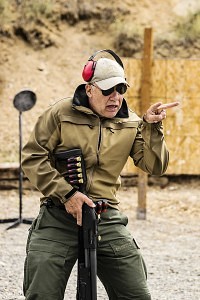
The majority of my experience as a firearms instructor comes from the LE / military arenas. However, I do occasionally help out with hunter safety and even coach some trap. Over the years, I have tried to listen and learn from many colleagues and instructors. One of the first lessons I learned was that I don’t know everything.
The first thing is to remember you can always learn something new. Never rest on your laurels, and always try to learn something that will make you a better instructor. Find a mentor or mentors and work on how you instruct. Every time I watch someone else teach, I’m trying to learn another way to communicate or relay information to the student. You can never stop learning and improving. I would never claim to be the best instructor, but looking back, I wasn’t a very strong instructor when I first started.
In my opinion, there are a few areas that make or break you as a good, professional instructor. I’m going to break down and discuss a few of these.
Professionalism
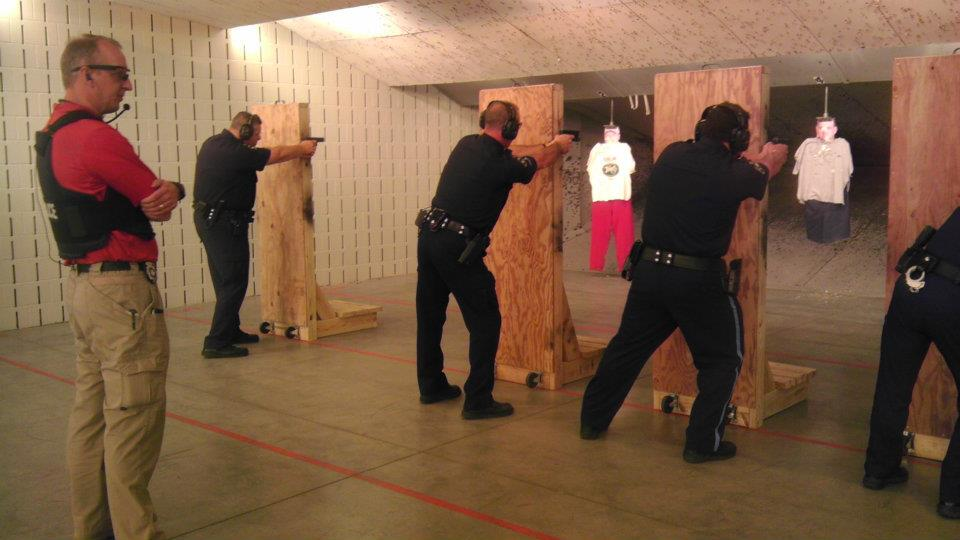
Professionalism also includes your documentation for the class. Every class needs a lesson plan and supporting documentation. Did you make a range safety plan and safety brief for your students and instructors? We can never afford to take safety for granted. Don’t cut corners or fall back on the “do what I say, not what I do” motto. Always set the example for your students.
Be courteous and respectful to your students and other instructors. Never bash another instructor or their techniques – that just shows that you are unprofessional. Never contradict another instructor in front of students unless it deals with an immediate safety issue. During a break, take the instructor aside and privately discuss any difference or suggestions.
Evaluate Yourself – Keep an Open Mind
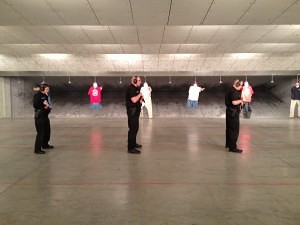
Just because an instructor has the most years of service behind his name, it doesn’t mean he is the best firearms instructor. This is especially true if there isn’t an open mind to progress and change.
Evaluate Techniques, Tactics, and Gear
This area is critically important, especially for defensive and tactical firearms instructors. Realizing we need to keep an open mind about ourselves, we also need to keep an open mind about our techniques, tactics, and gear. As we look at new tactics, we always have to remember that some look really cool on a flat, sterile range when the students’ heart rates are low. Always evaluate the validity of a new tactic or piece of gear before you introduce it into the classroom. Will the technique work when the student performs it with an elevated heart rate? Far too often, I’ve seen an instructor show students a “cool” technique that doesn’t pass the common sense test.
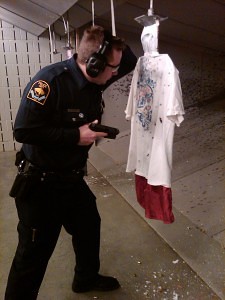
Think about this: if you’re with a group of instructors evaluating different techniques or gear and you’re always the one talking or you’re never wrong, you just figured out the issue – it’s YOU! If you run the training, you have to remember a good leader always depends on others to make you look good. Once you think you know everything, you are doomed. It’s impossible for one person to know everything, and if you think you do and you’re always right, you are the liability for your training program. Most of this comes down to leaving your ego at home. Remember, story time reduces training time.
As you update your curriculum, remember to have integrity. don’t take credit for other people’s work. Simply changing the name of a technique doesn’t make it yours, so don’t try to make a name for yourself that way. If you change the name of a technique, you will typically end up confusing your students anyway. This comes back to the ego again. The more you have to tell people how great you are, the more you are covering up your inabilities as an instructor or person.
Learning Environment
The most important thing a good firearms instructor can do is to help a student learn. Always remember, we must walk before we run. Breaking everything down into small tasks (modules) will go a long way to accomplish this goal.
- Explain what you are going to do
- Show them what you want them to do
- Demonstrate what you want them to do
- Have the student replicate what you want them to do in small parts (modules)
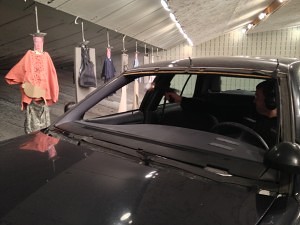
Students always need to have a positive learning experience. For example, when teaching some of the basic fundamentals of firearms, we need to understand why a student’s rounds are going to a certain location. A good instructor has learned how to break down the drills to help students learn why their rounds are always going to a certain place. Until a new instructor understands this, a simple shot analysis card can be an easy first step for learning.
Do I have all the answers? Absolutely not. If I ever thought I did, I would be a liability to myself and others around me. Remember, the purpose of this article is simply to get instructors to think about what a professional firearms instructor is and then take the time to evaluate themselves and their curriculum.
As for the idea of coming up with standards for firearms instructors, I don’t think it’s a very easy or feasible task. The biggest problem with this would be that there doesn’t seem to be a good clearinghouse to standardize a professional firearms instructor.
Remember, as firearms instructors, our goals need to revolve around providing the best possible real world learning environment for our students. Teaching a student to shoot a firearm has a great deal of liability surrounding it. Having students use what they have learned from you in defense of their lives or another person’s life is forever rewarding.
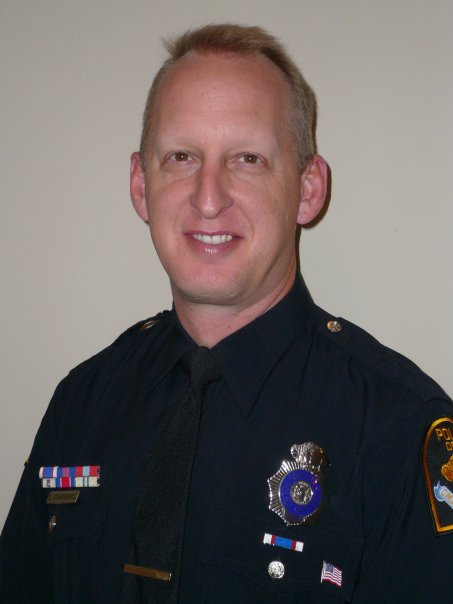
Officer Dave Staskiewicz is Range Master of the Omaha, Nebraska Police Department. He serves as the lead firearms instructor as well as the lead Taser instructor. Dave can be reached at dstaskiewicz@ci.omaha.ne.us.
Action Target Law Enforcement Training Camp a Huge Success
Action Target’s annual Law Enforcement Training Camp ended Friday as instructors and trainees parted ways after another year of advanced firearms training.
This year’s LETC was attended by 128 law enforcement officers and firearms instructors from across the country and the world. Nearly 20 states were represented with officers from Hawaii and California to Florida and Pennsylvania. While LETC is traditionally a domestic law enforcement camp, as its fame has spread throughout the world, we’ve increasingly received requests to attend from foreign law enforcement agencies. This year, 12 officers from Canada and one officer from Brazil attended as well.
On Monday, Sept. 9, officers arrived at Action Target’s headquarters to sign in and pick up their gear which included personalized gun cases and water bottles. They were also able to tour the facilities where all of Action Target’s products are designed, engineered, and manufactured.
Classes started Tuesday morning at the Utah County Sheriff’s Office Thistle Firing Range. This year’s training classes included Bob Schneider’s Shoot House Training, James Washington’s Training for the Fight with the Pistol, a Glock armorer’s course, and many others. A total of 12 instructors participated from a variety of organizations including Spartan Tactical Training Group, Safariland Shooting School, Hoffners Training Academy, Glock Training Division, Police Training Division, JDS Tactical, and Clayton County Police Department.
Some of the world’s finest law enforcement instructors teach at the camp every year. Firearms training professional Brian Hoffner, who has been an instructor at LETC nearly every year since the mid ’90s, encourages students to constantly learn more and to keep coming back to LETC every year.
“I tell my students, first of all, if you get one thing from every class, then this camp has been successful,” he said. “But you don’t stop there. You continue to be a sponge and you keep coming back to this LETC every year because you’ll pick up that one thing or more every time. And then you take it back and you share it. We lead by example, we save lives, we keep departments safe.”
Wednesday night, more than 30 officers at the camp put their skills to the test in the Dirty Harry shooting competition as they vied for free tuition at next year’s LETC. Participants were required to shoot a variety of reactive steel targets while moving among three separate stations. The officer with the fastest time would win free tuition to LETC 2013 with second and third place winning significant tuition discounts. For the fifth year in a row, a law enforcement officer from Utah Highway Patrol won the competition showing that home court advantage has its benefits even when it comes to shooting.
The classes themselves were anything but fun and games, however. LETC participant Dan Cord (who served in Fallujah, Iraq, before becoming the lead guitarist of the rock band American Hitmen) said he learned more in three days at the camp than he learned since joining the Marine Corps.
“When they said you’ll be able to do 2 in the chest 1 in the head in 1.68 seconds by the end of the day, I didn’t think it was doable. But by the end of the day, we were doing it. I’ve done more reloads and loads with a handgun in the past few days than I have in years. It’s amazing how you can train your motor skills and pretty soon you’re not even thinking about that, you’re thinking about the next target.”
The camp ended Friday afternoon with one final day of classes before attendees began their long journeys home to locations across the nation and the world.
We at Action Target were honored to have so many exceptional officers at this year’s camp, and we hope that each one took home something new that they can share with the men and women they serve with. Superior law enforcement training has always been one of our corporate missions, but we couldn’t make that happen without the continued assistance of our instructors and the participation of the world’s finest. To everyone that attended, instructed, or helped, we thank you and hope you enjoyed your time with us.







